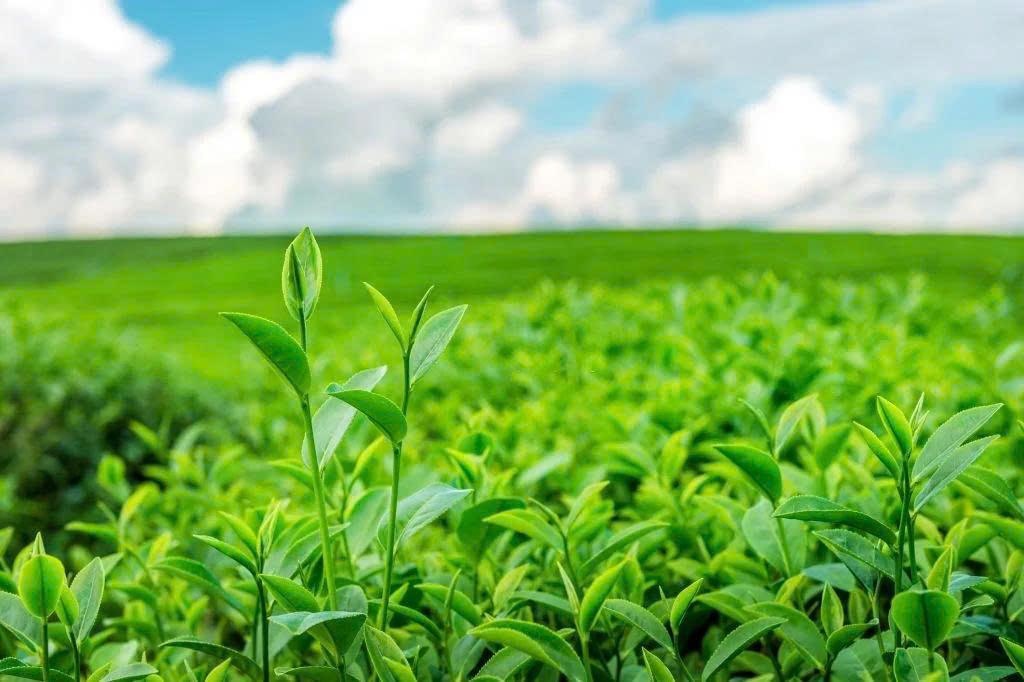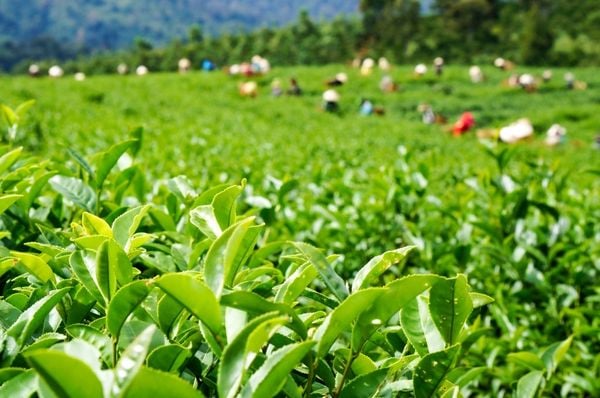
1. Origin and Tea Growing Regions
The tea plant has a long history in Vietnam, believed to be one of the cradles of the world’s tea. Studies have found fossilized tea leaf traces dating back to the Stone Age in the ancestral land of the Hung Kings (Phu Tho), indicating that tea has been associated with the Vietnamese people for thousands of years. Initially, tea was used as a medicinal herb, later becoming a familiar beverage in daily life and cultural rituals.
Vietnam has many famous tea-growing regions, each offering a unique flavor due to different climatic and soil conditions. Some typical tea regions include:
- Thai Nguyen: Famous for its green teas such as “nõn tôm” (young bud), “móc câu” (hook-shaped), with a characteristic aroma of young rice and a mild astringency followed by a sweet aftertaste. In particular, the Tan Cuong area of Thai Nguyen is considered to have the best green tea.
- Northwest: With ancient Shan Tuyet tea areas in Yen Bai, Ha Giang, Son La…, where hundreds-year-old tea trees absorb the essence of the mountains and forests, producing tea with large buds covered in white down, a golden-yellow liquor, a rich, mildly astringent taste, and a deep sweet aftertaste.
- Lam Dong (Bao Loc, Da Lat): The year-round cool climate creates favorable conditions for growing high-quality teas, including green tea and oolong tea.
- Phu Tho: One of the provinces with a large tea-growing area since the 20th century.

2. Typical Types of Vietnamese Green Tea
Vietnamese green tea is very diverse and can be classified based on various factors such as growing region, raw materials, and processing methods. Some popular types of green tea include:
- Thai Nguyen Tea: As mentioned, famous for its distinctive young rice aroma. Typical types include “trà nõn tôm” (only buds are picked) and “trà móc câu” (one bud and two leaves are picked).
- Shan Tuyet Tea: Tea from ancient tea trees in high mountainous areas, with a special, rich, and fragrant flavor.
- Scented Tea: Green tea scented with natural flowers to create unique aromas, for example:
- Lotus Tea: The most famous among scented teas, with the delicate and sweet fragrance of lotus flowers.
- Jasmine Tea: The strong and captivating aroma of jasmine flowers.
- Pandan Tea: The characteristic fragrance of pandan leaves.
- Other green teas: Depending on the processing method and the shape of the tea leaves, there may be other names such as Long Tinh tea (flat leaves), Bat Tien tea…
3. The Value of Enjoying Vietnamese Green Tea
Enjoying green tea is not just drinking a refreshing beverage but also a cultural nuance, a refined art. The value of savoring Vietnamese green tea lies in:
- Natural flavor: Green tea offers the fresh, pure taste of tea leaves, which may have a slight initial astringency and a mild sweet aftertaste.
- Diversity in aroma: Scented teas provide unique and delightful olfactory experiences.
- Health benefits: Green tea is known for its high antioxidant content, which helps boost the immune system, is good for the heart, and may aid in weight loss.
- Cultural and spiritual value: Tea enjoyment is a moment of relaxation and tranquility, an opportunity to socialize, share, and appreciate the beauty of tradition.
4. The Export Market for Vietnamese Green Tea
Vietnam is one of the largest tea-producing and exporting countries in the world. According to statistics, Vietnam ranks among the top 5 green teas exporting countries. The main markets importing Vietnamese tea include Pakistan, Taiwan, Russia, China, the United States, and EU countries.
Despite the large export volume, the export value of Vietnamese tea remains modest compared to its potential, as the majority of exports are raw tea. Currently, the Vietnamese tea industry is aiming to improve product quality, develop specialty and organic teas to increase added value and expand its export markets to countries with higher quality requirements.
In summary, Vietnamese green teas is not just a familiar drink but also a precious part of the cultural heritage, carrying the unique flavors of the land and the sophistication of the art of tea enjoyment. With significant development potential, Vietnamese green teas promises to increasingly assert its position in the international market.
Other articles:
Other agricultural products:


